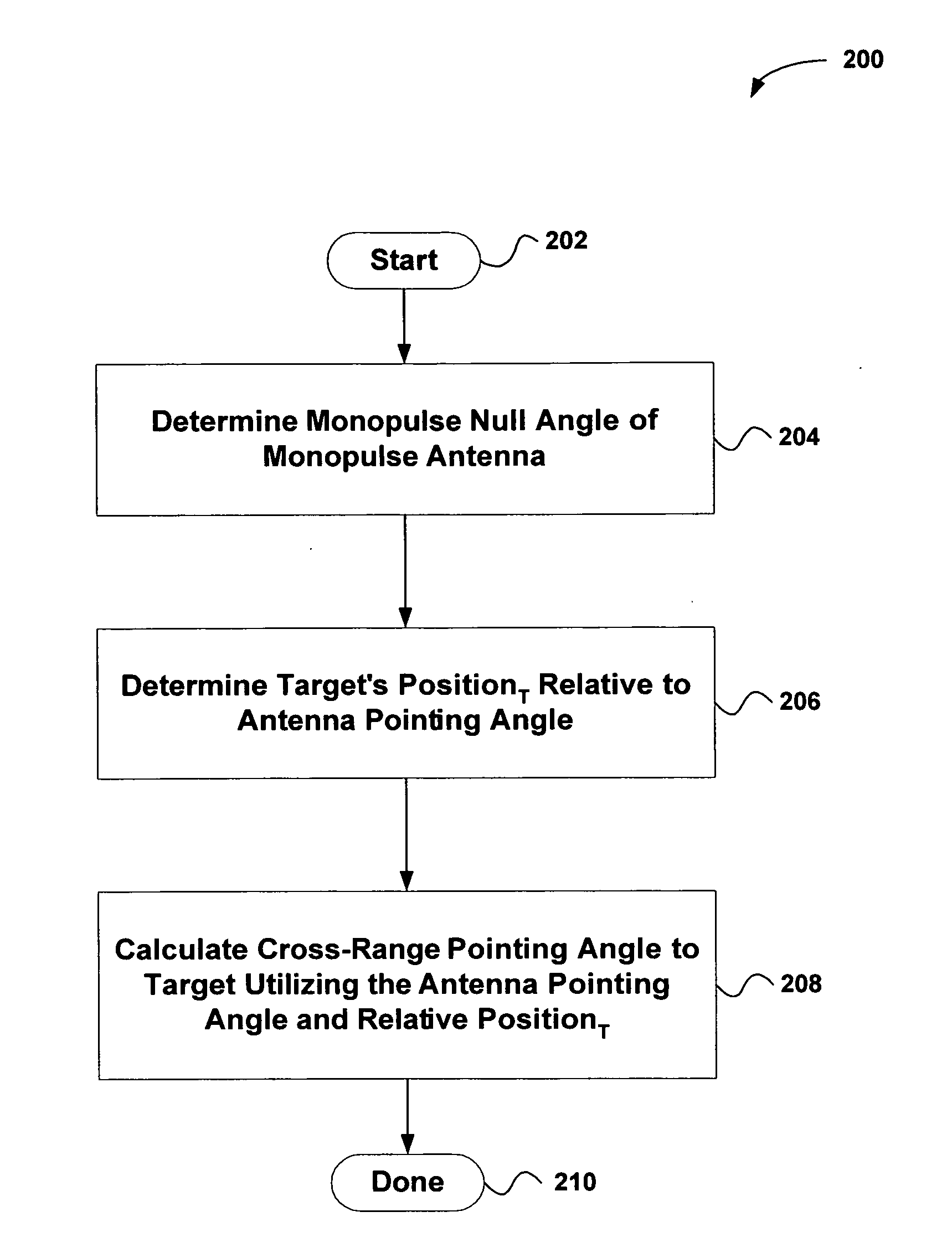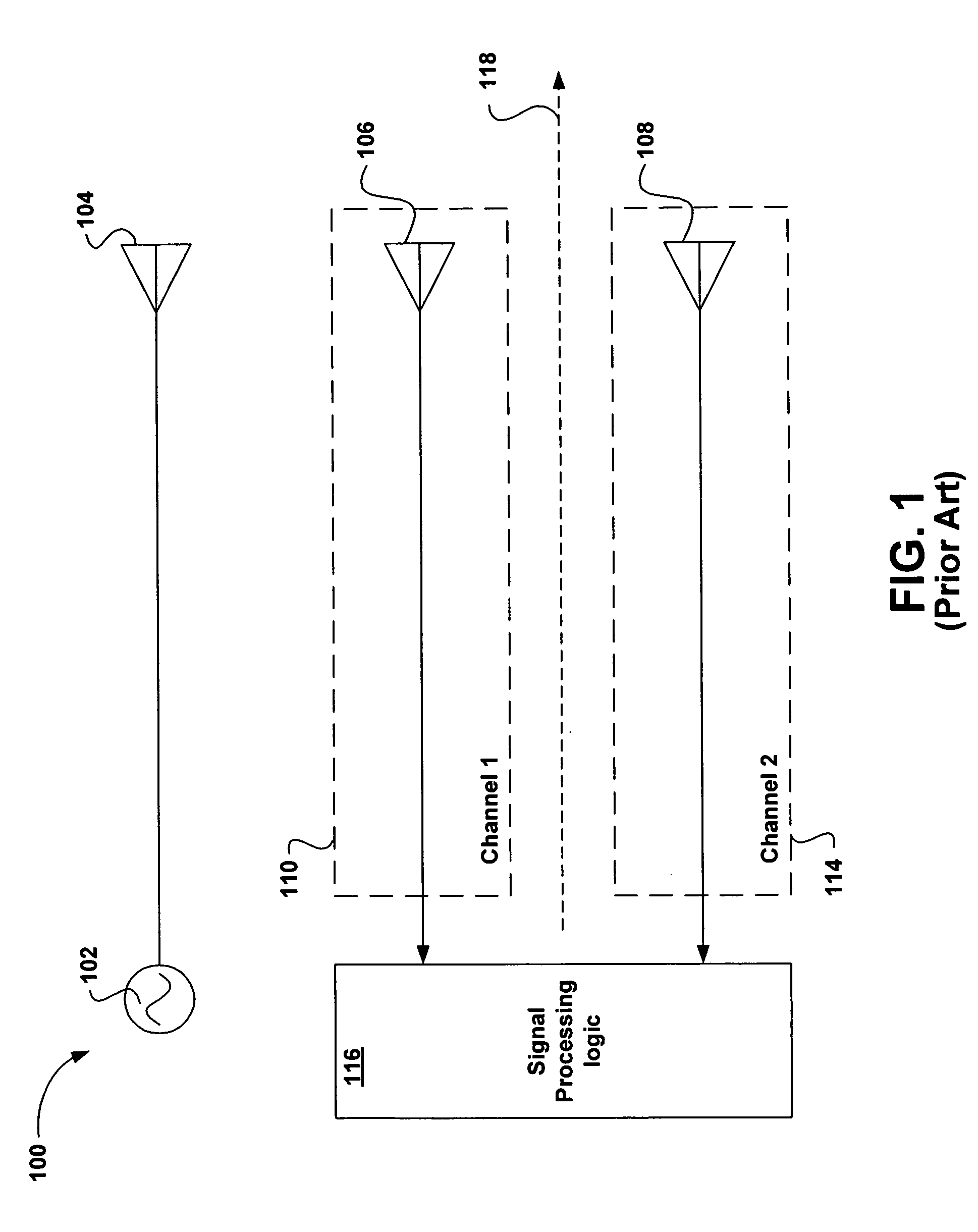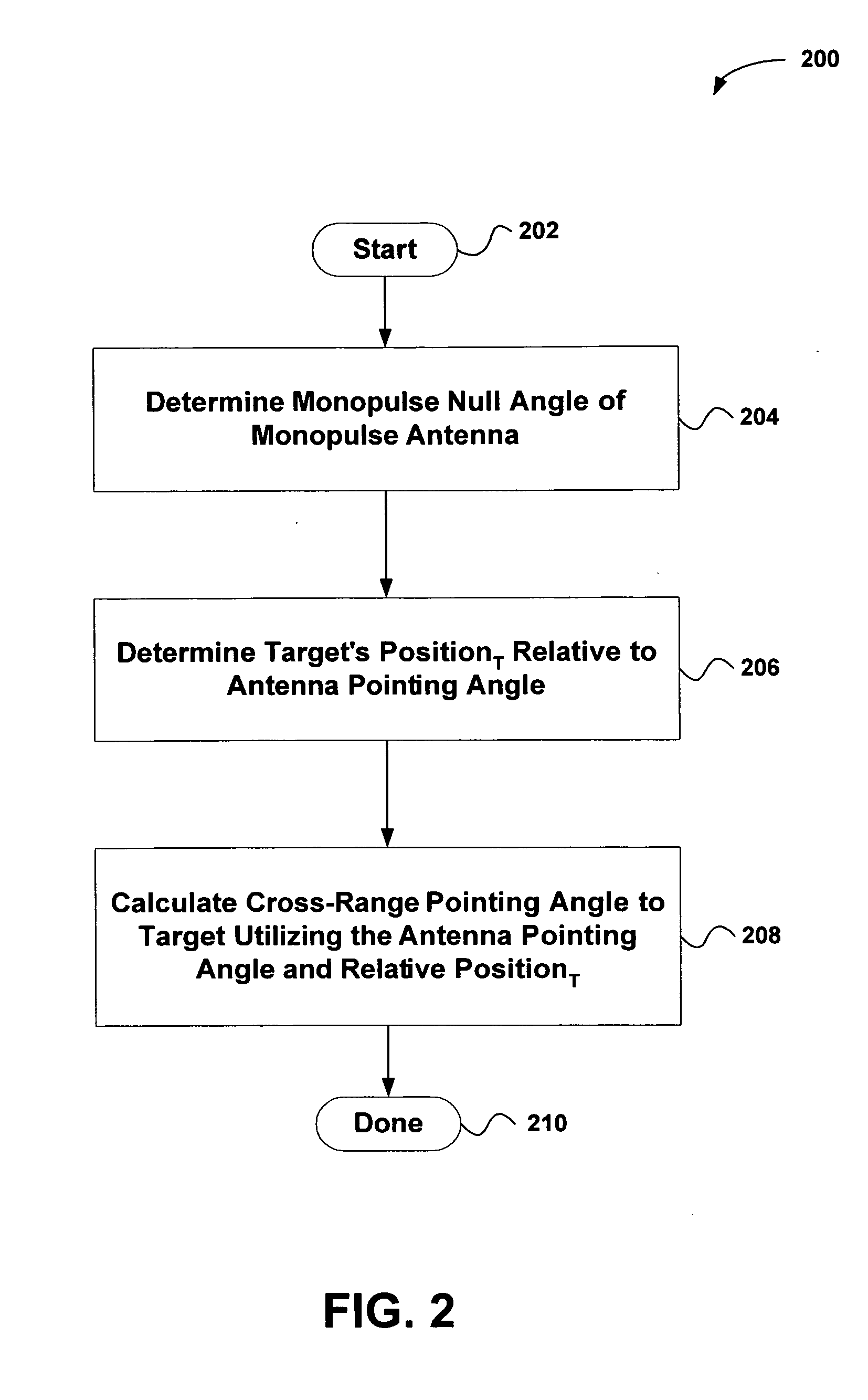System and method for estimating the azimuth pointing angle of a moving monopulse antenna
a monopulse antenna and azimuth pointing angle technology, applied in the direction of antennas, instruments, antenna details, etc., can solve the problems of limiting the accuracy with which the absolute position of the moving target can be established, cumbersome operation to perform, and large errors in the monopulse measurement, so as to achieve the effect of increasing the accuracy of tracking purposes
- Summary
- Abstract
- Description
- Claims
- Application Information
AI Technical Summary
Benefits of technology
Problems solved by technology
Method used
Image
Examples
Embodiment Construction
[0024] An invention is disclosed for determining the azimuth pointing angle of a monopulse antenna. In general, embodiments of the present invention determine the monopulse null angle of a monopulse antenna by obtaining a ground signature, which is utilized to deduce very accurately where the antenna is pointing. In this manner, the monopulse antenna azimuth pointing angle can be determined regardless of antenna misalignments or instabilities.
[0025] In the following description, numerous specific details are set forth in order to provide a thorough understanding of the present invention. It will be apparent, however, to one skilled in the art that the present invention may be practiced without some or all of these specific details. In other instances, well known process steps have not been described in detail in order not to unnecessarily obscure the present invention.
[0026]FIG. 2 is a flowchart showing a method 200 for determining the cross-range azimuth pointing angle to a targe...
PUM
 Login to View More
Login to View More Abstract
Description
Claims
Application Information
 Login to View More
Login to View More - R&D
- Intellectual Property
- Life Sciences
- Materials
- Tech Scout
- Unparalleled Data Quality
- Higher Quality Content
- 60% Fewer Hallucinations
Browse by: Latest US Patents, China's latest patents, Technical Efficacy Thesaurus, Application Domain, Technology Topic, Popular Technical Reports.
© 2025 PatSnap. All rights reserved.Legal|Privacy policy|Modern Slavery Act Transparency Statement|Sitemap|About US| Contact US: help@patsnap.com



